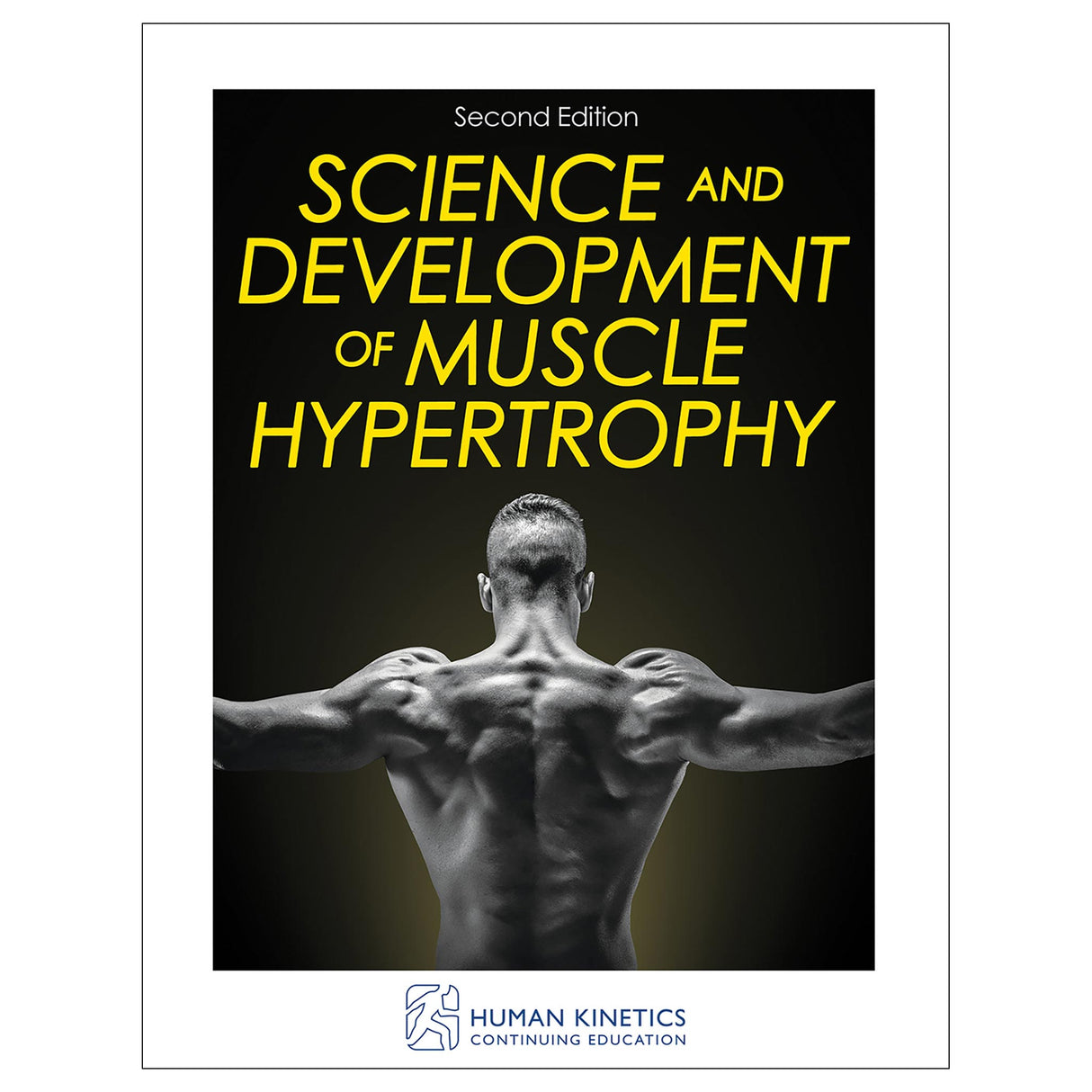Science and Development of Muscle Hypertrophy 2nd Edition Online CE Course With Ebook
Author: Human Kinetics
$99.00 USD
Human Kinetics strongly recommends that you complete your exam within the calendar year of your date of purchase to ensure approved credits do not expire for your organization.
- Science and Development of Muscle Hypertrophy, Second Edition, ebook
- Online study guide
- Online continuing education exam
With more than 1,000 references and applied guidelines, no other resource offers a comparable amount of content solely focused on the science of muscle hypertrophy and its application to designing training programs. You will learn various methods by which hypertrophy is measured, including site-specific measures (circumference measures, MRI, CT, and ultrasound), indirect measures (underwater weighing, DXA, BIA, ADP, and skinfolds), and histological measures (biopsy), as well as the strengths and limitations of each modality.
Although muscle hypertrophy can be attained through a range of training programs, you’ll learn and apply the specific responses and mechanisms that promote optimal muscle hypertrophy. You’ll also receive guidance for achieving greater training volumes with training practices that maximize every individual’s genetic potential to gain muscle. Explore how genetic background, age, sex, and other factors have been shown to mediate the hypertrophic response to exercise, affecting both the rate and the total gain in lean muscle mass.
Sample programs show how to design a three- or four-day-per-week undulating periodized program and a modified linear periodized program for maximizing muscular development. The included study guide provides chapter activities and questions to help solidify understanding of key concepts.
Once you complete the course and pass the exam, you can print a certificate for continuing education credits.
Learning Objectives
- Understand the structure and function of the neuromuscular system.
- Describe the responses and adaptations of hormones.
- Understand hypertrophy-related responses and adaptations to exercise.
- Describe metabolic stress and its impact on muscle hypertrophy.
- Understand muscle damage and the muscle repair process.
- Understand how to use various assessment techniques to determine muscle size and its change over time.
- Describe the program design variables for maximizing muscle hypertrophy.
- Understand the various types of muscle action.
- Describe the importance of range of motion for muscle hypertrophy training.
- Identify the proper repetition ranges for muscle hypertrophy training.
- Explain the strategies of advanced training practices to maximize muscle hypertrophy.
- Explain the role of aerobic training in muscle hypertrophy.
- Understand the effects of concurrent training on muscle hypertrophy.
- Identify the factors of maximal hypertrophic development.
- Explain how biomechanics is related to muscle hypertrophy training.
- Understand how attentional focus affects muscle hypertrophy.
- Identify exercise selection strategies.
- Describe various periodization models and how they affect hypertrophic development.
- Explain the relationship between nutrition and muscle hypertrophy.
- Identify essential and nonessential amino acids.
- Identify common protein sources.
- Explain feeding frequency and nutrient timing guidelines.
Audience
Certified strength and conditioning professionals, personal trainers, athletic trainers, and other fitness professionals.Neuromuscular System
Endocrine, Paracrine, and Autocrine Systems
Chapter 2. Mechanisms of Hypertrophy
Mechanical Tension
Metabolic Stress
Muscle Damage
Chapter 3. The Measurement of Muscle Hypertrophy
Indirect Measures
Site-Specific Measures
Chapter 4. Role of Resistance Training Variables in Hypertrophy
Volume
Frequency
Load
Exercise Selection
Type of Muscle Action
Rest Interval Length
Repetition Duration
Exercise Order
Range of Motion
Intensity of Effort
Chapter 5. Advanced Training Practices
Loaded Stretch Training
Intraset Rest Training
Drop Sets
Supersets and Pre-exhaustion
Eccentric Overload Training
Chapter 6. Role of Aerobic Training in Hypertrophy
Hypertrophic Effects From Aerobic-Only Training
Concurrent Training
Chapter 7. Factors in Maximal Hypertrophic Development
Genetics
Age
Sex
Training Status
Chapter 8. Program Design for Maximal Hypertrophy
Biomechanics
Exercise Selection Strategies
Periodization
Chapter 9. Nutrition for Hypertrophy
Energy Balance
Macronutrient Intake
Feeding Frequency
Nutrient Timing





